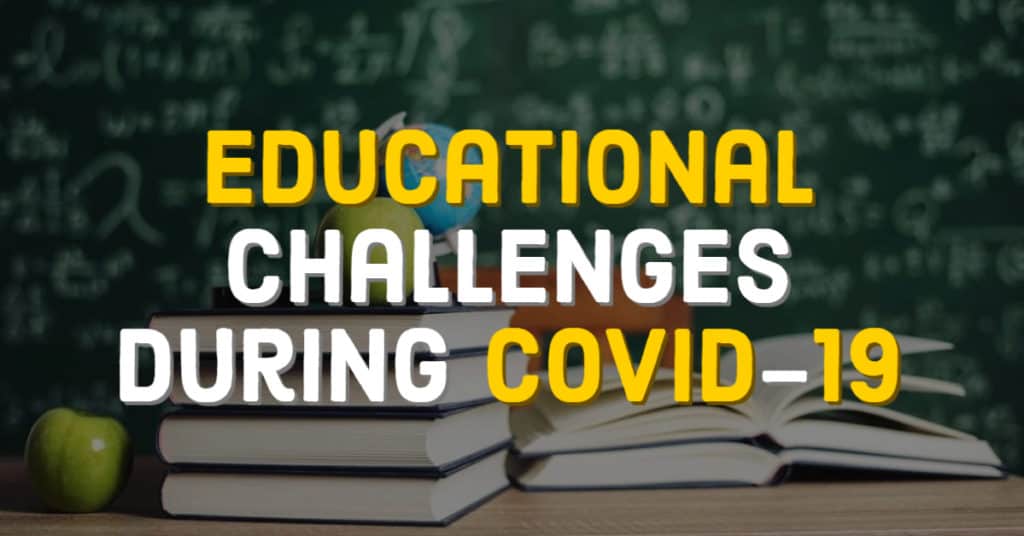It has been many months since the COVID 19 broke out in November 2019 and has gradually spread in almost all parts of the world. The world population of nearly 7.75 billion is being challenged for survival due to this pandemic. Lockdowns across the world have been promulgated on the premise of ‘prevention is better than cure’ as the implications of virus infection are fatal at times. Almost every sector has been adversely affected by the abrupt disruption of activities on account of the major activities coming at the halt.
Almost every sector has been adversely affected by the abrupt disruption of activities on account of the major activities coming at the halt.
The education sector catering to around 1.57 billion students i.e. more than 20% of the world population has faced the brunt of the nearly complete disruption. Students at primary, secondary, higher secondary and tertiary levels are reeling through the trauma of shattered dreams concerning timelines. However, the solace comes from the eternal truth that the most important is to survive and if survived every dream can be fulfilled.
May visit: Massive Online Open Courses
From time immemorial human creativity has driven the activities around and consequently, the present state of every civilization relies significantly on the technological advancements to seamlessly integrate the global community using ICT. Concomitant to the state of available technologies to handle discontinuance of contact type teaching-learning activities in the educational institutions, the use of online platforms for teaching is projected as a solution.
Enthusiastic academics across the globe are initiating the online platform usage to substitute the prescribed teaching-learning activities, had the pandemic not led to the sudden closure of educational institutions and adhere to the timelines. Certain obvious challenges need due consideration for successfully substituting the physical classroom-type teaching-learning with the virtual teaching-learning process.
The digital divide is apparent and one fit solution founded on providing education using internet connectivity to overcome disruption seems indecorous adventure.
Undoubtedly, ICT has played a pivotal role in the shrinking of the boundaries leading to nearly 4.5 billion internet users across the world i.e. more than 58% of the world population having access to the internet. Statistics show the encouraging number of around 3.5 billion searches made on Google alone every day which will be more after aggregating other search engines but does not infer the extensive usage of internet resources.
If one considers these numbers on the premise that every internet user will have a suitable device to access, it is evident that quite large fraction i.e. around 42% population still does not have access to the internet. The ubiquitous knowledge availability through internet access seems to be limited due to typical socio-economic conditions prevailing in different parts of the world. The digital divide is apparent and one fit solution founded on providing education using internet connectivity to overcome disruption seems indecorous adventure.
There is a significant gap and the online mode of education for the children belonging to such household is of no use.
At the back of every technological development, access to electricity has been quite critical. World Bank statistics indicate for around 89% of the world population having access to electricity, meaning thereby that a significant number of the household do not have electricity and all gadgets running on electricity have no relevance for such population.
May read: WHO advice for COVID-19
Looking from the economic perspective there is a sizeable population in the world which can not afford a television, computer, smartphone, etc.. To be specific, the statistics shown by Statista indicates that worldwide, 1.67 billion television are there in the household, 49.7% of households have a computer and around 3.5 billion smartphone users are there. Which means that there is a significant gap and the online mode of education for the children belonging to such household is of no use.
In view of the above, it is imperative to assess the digital divide and ensure that no student is deprived of equal learning opportunities on account of remedies being propagated to negotiate the ongoing disruption in regular teaching-learning activities due to COVID19.
Editorial Team, The Rise.co.in











Pingback: Don't Compromise on Quality Education - Dr.Onkar Singh
Pingback: Uncovering implications of syllabus reduction TheRise.co.in
Pingback: Technological Transformation in Higher Education - TheRise.co.in